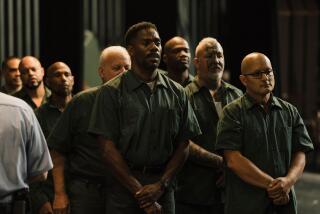Gene Kelly Made It Look So Easy
Well after the peak years of his musicals, Gene Kelly, who died last week at the age of 83, could still drop to the floor as if to do push-ups and flip himself across the room on his hands and toes. It was an astonishing performance for a man at any age. Then again, everything about Gene Kelly was astonishing.
It has always been the miracle and the salvation of motion pictures that they have kept finding the men, women and children they need. Kelly was already a star on Broadway as the amoral hoofer in “Pal Joey” when he came to Hollywood at the age of 27. But you have the feeling that even Louis B. Mayer had no inkling that Kelly would go on to revitalize the movie musical, as his friend, Fred Astaire, had done before him.
Shirley Temple sent thousands of children to tap-dancing lessons (myself included, until it was clear my feet stuck to the floor as if by glue). Later, Kelly made us all wish we could dance like Kelly. Astaire’s ballroom elegance was wonderful to watch but was obviously beyond even the dreams of most mortals. Kelly’s robust and free-form style seemed--but only seemed--to be within the realm of possibility.
For earthbound males, who did not know a pas de seul from a fillet of sole, the implicit appeal of the dancing was that it could be seen as an act of courtship. Kelly himself used to joke that he became a dancer because you got to hold the girl. With Astaire--and it seems impossible to remember those two giants separately--the courtship was simply in a different mode; you still got the girl. For their part, the women would have given most anything for a once around the floor with Gene Kelly.
He made it look so easy, so spontaneous. As all the news reports made clear, Kelly’s “Singin’ in the Rain” number is the single sequence for which he will be remembered longest, a joyous, leaping, loping, cavorting, splashing celebration of love that is enough to give heavy rain a good name forever.
*
But I also remember, with enchantment, Kelly in a bare rehearsal room putting a sheet of newspaper on the floor, tentatively exploring the sandy, soft-shoe sound it made when he moved it with his foot, dividing the paper in half and seeming to improvise a whole routine on the spot, even exploiting a creak in the hardwood floor as a musical accent.
Spontaneous. But as George Sidney, who directed Kelly in “Anchors Aweigh” and several other films, remembered the other day, Kelly was a perfectionist who would “dance until his feet bled” to get it right. Debbie Reynolds recalled that Kelly was a perfectionist on everybody else’s behalf as well, driving her to tears until she got it right too.
Kelly was a good actor who got better and surer as he went along and, like Astaire, proved to be a good dramatic actor, as in Stanley Kramer’s “Inherit the Wind.” As a director, he’s most memorably associated with the musicals (later including “Hello Dolly!”). But I remember as well the very dark comedy, “A Guide for the Married Man” in 1967, with Walter Matthau as a faithful spouse being taught the ways of adultery by Robert Morse. It left no doubt that Kelly as creator was anything but a one-note man.
The charm of the “Singin’ in the Rain” number lies not least in the catchy introductory phrase (“DUM de dum dum, dum dum DUM de dum dum”) and in Kelly’s singing, that light, rather high tenor that was itself deceptively easygoing, the more beguiling because he was a guy singing, not a singer singing. The singing, too, seemed within the range of ordinary mortals, and at that maybe it was. But the sequence, like the whole film, is movie-making at its most star-driven, but also at its most effectively collaborative.
*
Kelly and Hollywood were blessed in their mutual timing. He came to an industry not yet changed forever by television, its creative cadres--writers, composers, arrangers, musicians, producers and directors--intact, its mass audience intact and indeed reaching toward its postwar peak, before the numbers began to slip. At Kelly’s moment in time, the motion picture was uniquely ready to push the boundaries of the musical, and Kelly was preeminently the man to do it.
The musical, as it turned out, was to be a casualty of television, the mass audience pinioned at home by the new medium, the cadres dispersed. Yet, as the success of the “That’s Entertainment” series demonstrated, the old audiences had not lost their love of musicals, and young audiences, experiencing them for the first time, could see and hear what they’d missed.
Our movie icons have been falling like tenpins in recent times. The particular sharp sadness as Gene Kelly departs is that the musical genre he reinvented had predeceased him by a quarter-century. But, not for the first time, we have to be grateful for the immortality that the screen gives the individuals we loved and the works of genius they gave us.
More to Read
The biggest entertainment stories
Get our big stories about Hollywood, film, television, music, arts, culture and more right in your inbox as soon as they publish.
You may occasionally receive promotional content from the Los Angeles Times.










